The final post in this series of blog posts covering our 11 day trip to Cebu! As is becoming a practice, at the end of every trip, I’d do a summary and reflective post musing about what I saw, with an emphasis on cultural, environment, and other oddities I observed of where we were.
Before we left Singapore, the wife asked if language would be a problem in Cebu. I chuckled and said there shouldn’t be in the very least. Since English is widely spoken in the Philippines – as I told her – and we should have no problems communicating. Well, one trip later, that was still true… but only somewhat. Specifically, we had the occasional difficulties making ourselves understood when in Cebu. There were no difficulties when conversing with property staff for the most part at the places we stayed at. But outside that, and even at the SM City Cebu mall, we had to speak slowly and also enunciate key words to make sure we were understood. From what I know, the Filipinos in the area speak English and Cebuano, but either it’s because Singaporeans speak English in a way that others find difficulty understanding [to clarify, I did not use Singlish], or it’s that English while learnt in Cebu just isn’t widely used among the locals. For example, we didn’t find both our drivers, friendly as they really were, able to converse in English with us that well.
The currency of the country we’re visiting is also a matter of interest to me. Our currency exchangers in Singapore provided us 1000p notes – each is about SGD23 – but not in larger denominations than that. We had to carry a sizable stack of 1000p notes into the country, about SGD1,800 of which was for the balance of the payment to our Cebu tour operator. The 1000p notes were of pretty good quality, particularly the new polymer ones. The smaller denomination notes that we received from locals thereafter were of very different qualities: the lower the denomination, the poorer the quality was. We received a couple of 20p notes that were just falling apart! The coins also took a fair bit of getting used to, but the various business operators were routinely very helpful to collect from us the exact amount when we fished out what we had in our pockets to pay for various items of small value.
There was also a fair bit of driving around in Cebu and Bohol islands. For Cebu, it’s largely because the interesting places to visit are on opposite sides of the long thin island. Cebu City and Moalboal is somewhat in the middle but on opposite sides, Oslob is in the south, and Malapascua is at the north. The tourist hotspot areas in Oslob is a lot more compact, but that we’d included the Cadapdapan Rice Terraces meant we spent 7 hours getting there and back to these hotspots.
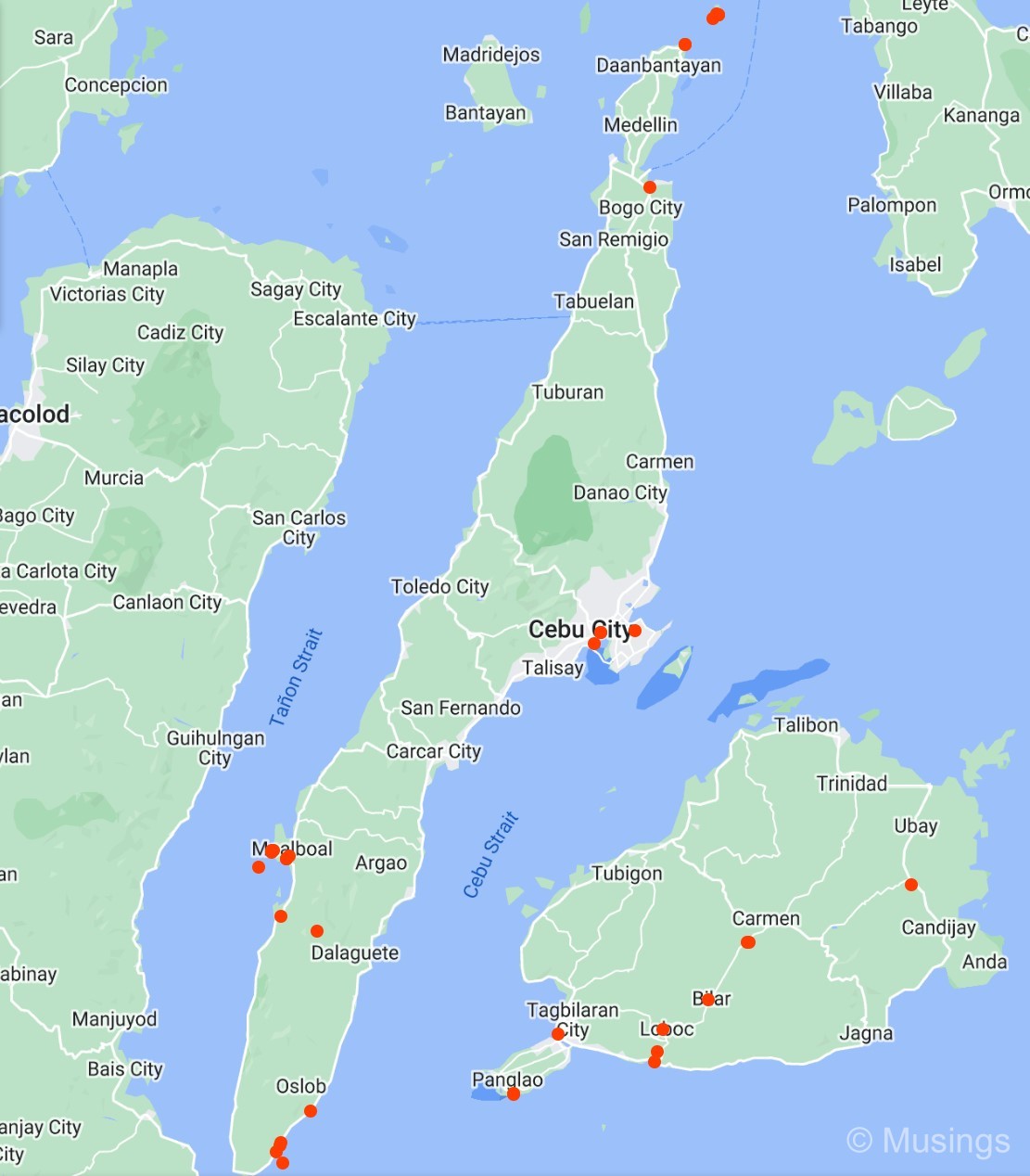
Traffic conditions: well, the traffic in the main Cebu City area was, not surprisingly, congested as soon as we neared peak hour: but outside it, and particularly as we drove around Oslob, Moalboal and in Bohol, traffic was routinely low to moderate. Road quality though wasn’t very good outside Cebu City: potholes were common, and even when the road surface looked smooth, the vehicle rides were often bumpy.
The cleanliness of environments while we were in Cebu was also better than we expected. No, it’s not to the sanitised scrupulously clean standards of Singapore or any Japanese city, but it’s at least better than say Bali or Hanoi. The Filipinos seem to genuinely care about the environment. Recyclable bins are common, and the waters surrounding the various islands we were at seemed to be fairly litter free. In short, we didn’t see that sea of litter that we saw at Halong Bay.
In the rural parts of Cebu and Bohol, we also observed a lot of stray dogs, and our two drivers routinely had to honk to warn the dogs away as we sped along roads, or expertly navigate around the dogs as a last resort. Unfortunately, and as our Bohol driver mused, vehicle collisions with strays are a common thing. While on the way to the rice terraces, we saw one poor critter who’d been knocked down and lying still in the middle of the lane. When we returned after the visit to the rice terraces, the stray was still there, but it looked like it’d been further run-over by more vehicles.
We found international cuisine a bit of a mixed bag. But then again, this was a 11 day trip, so our evaluation is based only in those couple of samples over the period. Korean food was OK, which I reckon is on account that Cebu is a favorite vacation spot for Koreans: our Bohol driver quipped that there are several flights from South Korea to Cebu every day. We certainly encountered many of them when in Bohol, and Alona Beach itself had a very large number of Korean mini-marts, stores, and restaurants. Thai was also OK, but it seemed that it’d been adjusted to fit local taste buds. Japanese cuisine in Cebu was a very different story: it was so-so to meh. We had tempuras at an Udon/Tempura joint in SM City Cebu, and were served tempuras that were lukewarm, though the wife observed that the basic recipe seemed correct. The ramen at Ramen Dojo wasn’t very good, and that’s apparently one of the better ramen joints in SM City Cebu!
As these things go too, the price of dining also varied widely. We were typically spending SGD30 to SGD40 per meal for the four of us while in SM City Cebu. In other words, coming pretty close to what we normally spend in Singapore. In Bohol while on Day 08, we had a quick lunch at a small local eatery. The plates of meat and fish we got there cost us just SGD8, and the fare while simply presented was really yummy. There were also the fast food options. And for that, pricing at least was pretty consistent: a lunch at McDonald’s in Cebu routinely cost us SGD20, versus the around SGD30 that we’d pay for in Singapore.
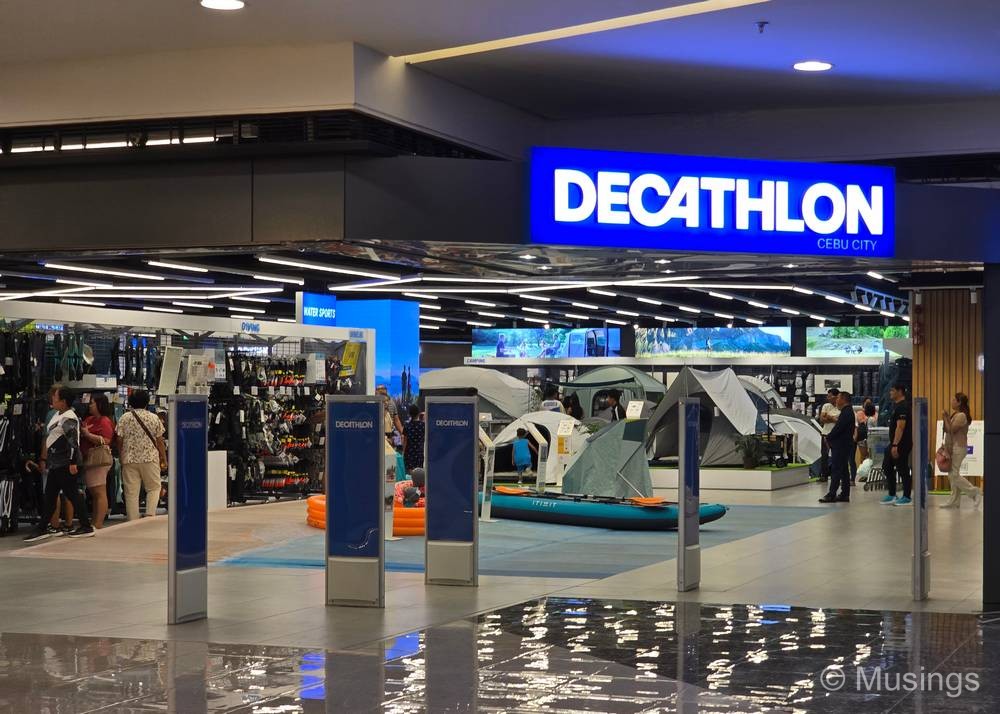
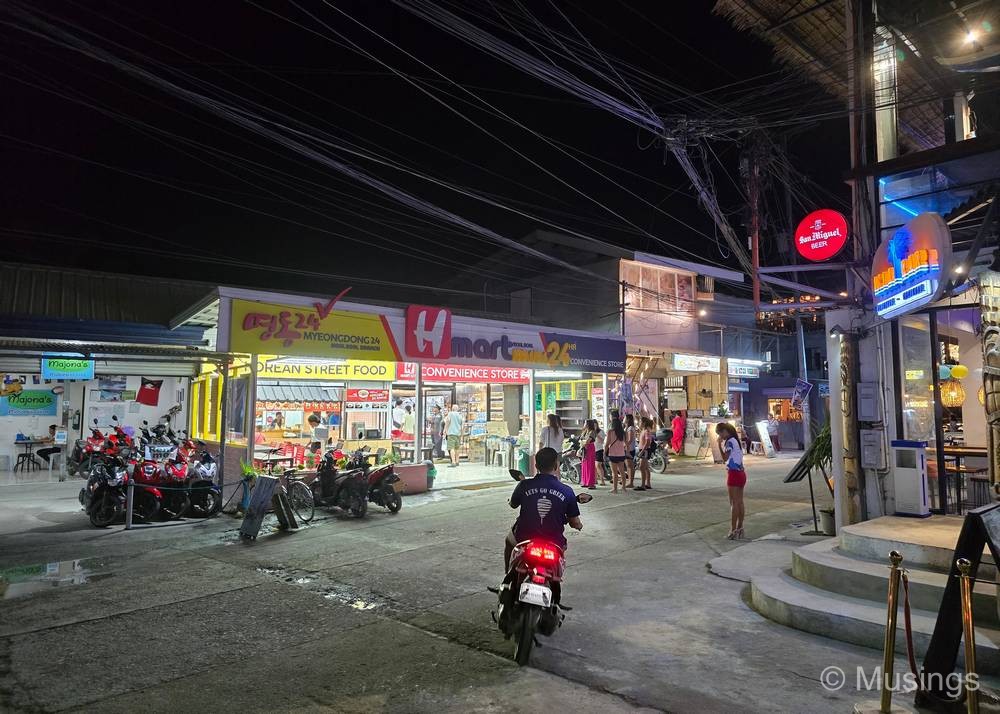
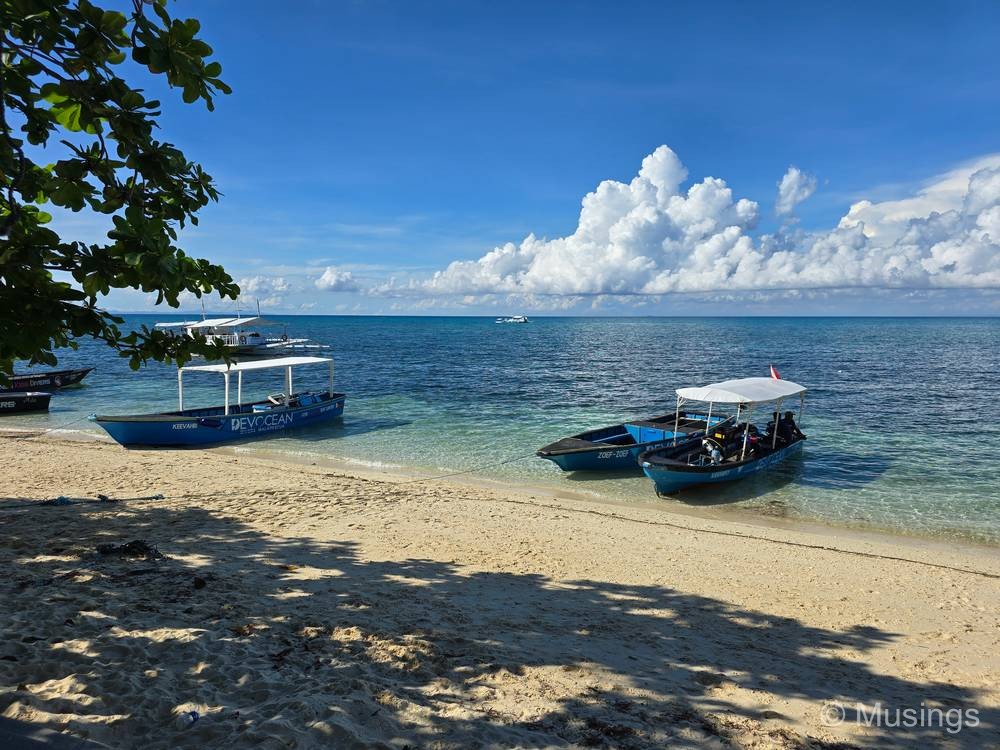
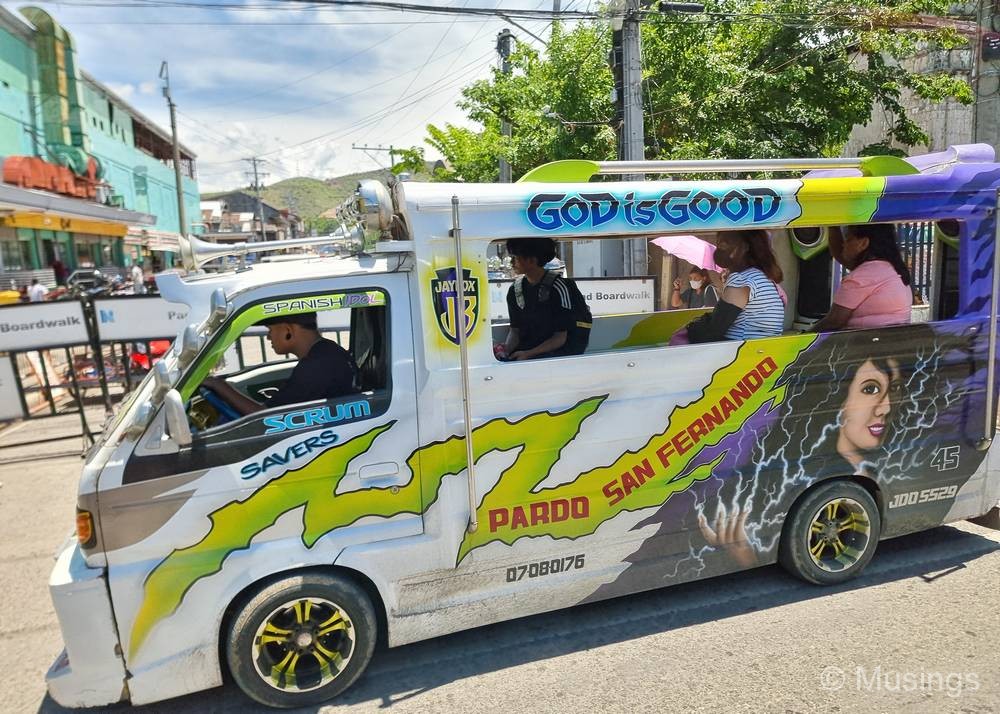
In all, this has been an excellent trip. The overall expenditure was lower than what we experienced in Hanoi last year: the latter was of course high in part because of the 3D2N cruise we took in Halong Bay, but good parts of the that itinerary were with day tours that were really value for money. In comparison, this Cebu trip had just one large expenditure item when it came to activities: the 7D customised tour, but outside that, we didn’t really had other large expenditures.
I’m quite interested to continue exploring other nearby vacations for June 2025. Perhaps Boracay in the Philippines, though it seems that a vacation to that famed island would be shorter than what we’ve done in Cebu on account that there’s much less to see and do, or maybe Tioman, and only as a 4D3N snorkeling tour. Either way, the next trip we’re planning for is likely going to be South Korea. So, more to come soon.